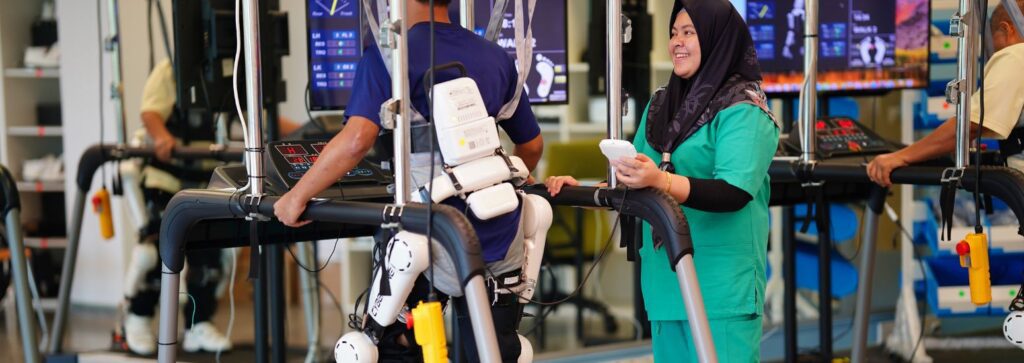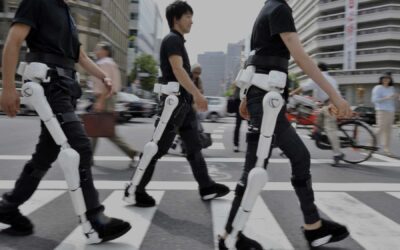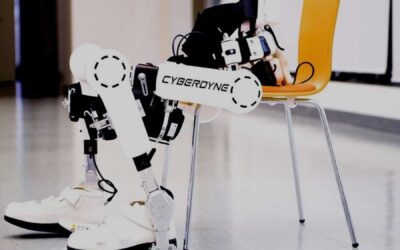The Hybrid Assistive Limb (HAL) is a lower limb exoskeleton suit developed by Japan’s Tsukuba University and the robotics company Cyberdyne. It is designed to enhance the physical capabilities of users, especially those with physical disabilities. HAL uses innovative sensing and processing technology to detect and provide power assistance based on faint bioelectrical signals generated when the wearer attempts to move.
Applications of the “Wearable CyborgTM – HAL”
The Hybrid Assistive Limb (HAL) technology assists individuals who have lost the function of their lower limbs and helps them regain the ability to walk. The Wearable Cyborg™ utilises the patient’s intention to move their legs. Developed by Japan’s Tsukuba University and the robotics company Cyberdyne, the Hybrid Assistive Limb (HAL) is a lower limb exoskeleton suit aimed at improving the physical capabilities of users, particularly those with physical disabilities.
HAL employs advanced sensing and processing technology to detect and provide power assistance based on subtle bioelectrical signals produced when the wearer attempts to move.
Treatment with Cyberdyne

When an individual changes position, their brain transmits a message to the muscle to initiate the movement. During this process, a subtle signal indicating the person’s intent to move becomes visible on the skin’s surface. HAL utilises sensors affixed to the skin to detect these “bio-electrical signals” and execute the requested movements based on the wearer’s voluntary instructions.
HAL follows a specific pattern–
- Think-
When we initiate movement, we start by considering the action.
By deciding, “I intend to stroll,” the brain transmits the required signals via the nerves to the muscles involved in that motion.
- Send
Each muscle in a healthy body receives signals from the brain, enabling the muscles to exert the proper force to correspond with the intention.
- Read
As the signals move toward the muscles, they escape onto the skin as extremely subtle signals known as “bio-electric signals.” HAL can detect the BES using its specially designed electrodes placed on the wearer’s skin. Considering additional gathered data, HAL can interpret the movements the wearer intends to make.
- Move
HAL regulates the power unit based on detected movements to help the user move as intended or exert more force than usual.
- Feedback
After the movement is finished, the brain evaluates the body’s response to the signals it sends. When HAL recognises the intended motion of the wearer, the body provides feedback regarding the flourishing movement.
Rehab – Robot
Rehabilitation after stroke using robot-assisted therapy

Rehabilitation robots play a crucial role in physical therapy by assisting therapists in ensuring the accurate performance of exercises. These robots support the patient’s body weight, allowing them to engage in more extended periods of participation. They also track progress and offer objective reporting and assessment.
The “Wearable Cyborg™” aids individuals experiencing paralysis or limb weakness due to spinal cord or brain injuries, such as stroke, traumatic brain injury, multiple sclerosis, or neurodegenerative diseases, by enabling them to move and exert more incredible motor energy than usual.
HAL, a cutting-edge system, is not just a robot. It’s a game-changer in the field of physical therapy. By enhancing the brain’s motor learning process, it stimulates the neuroplasticity of brain functions, paving the way for significant improvements in patients’ mobility and quality of life.
You can contact Cyberdyne at https://rehabmodalities.com/ to schedule a free demo today.



